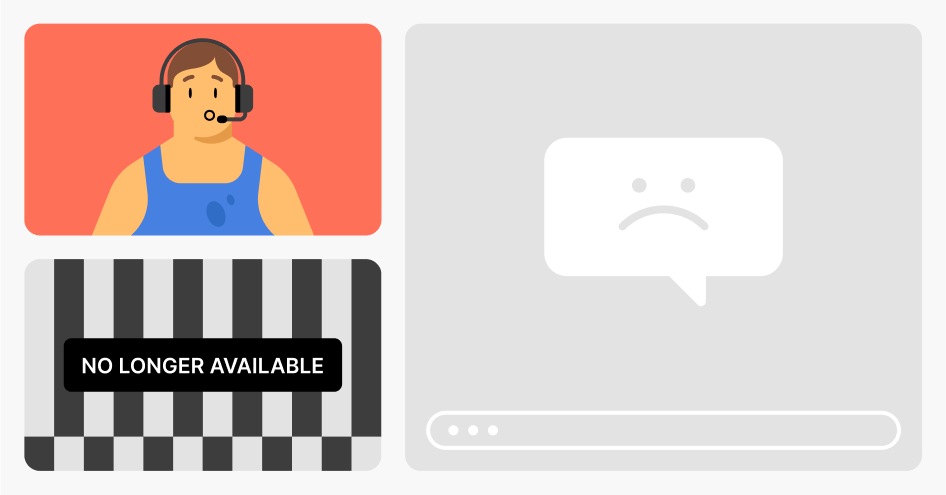Cyberbullying statistics everyone should know in 2021
Nearly 50% of all young people have been bullied online. And the numbers are bound to rise as lockdowns force millions to live their lives on the internet. We interviewed 2,000 people in the UK and US about cyberbullying, and the results are shocking. Here’s what we found.
Are people worried about cyberbullying?
The UK and US worry more about cyberbullies than they do about COVID-19.
Research shows that twice as many people are worried about cyberbullying than about COVID-19, the economy, or crime. While that seems like a surprisingly high percentage, it’s worth remembering that cyberbullying will be a major challenge for young people long after the global pandemic is behind us.
There’s clearly a growing concern about the scale of the problem, but before we can tackle it, we need to know where it’s happening.
70% of cyberbullying occurs on social media, and of that percentage:
- 47% occurs on Instagram
- 37% occurs on Facebook
- 31% occurs on Snapchat
The National Crime Prevention Council found that 80% of perpetrators engage in cyberbullying because they think it’s funny. Whatever the motivations of cyberbullies are, however, the results can be truly tragic.
Researchers from the Journal of Health Economics say cyberbullying increases suicidal thinking among victims by 14.5%, and suicide attempts by 8.7%.
It’s not just social media that facilities these trends, however.
25% of cyberbullying happens in online games.
While social media companies do attempt to track and curb abusive behavior, a quarter of cyberbullying happens somewhere far less monitored: online gaming platforms.
Cyberbullying research shows strong connections between competitive multiplayer action games and bullying behavior.
Cyberattacks as cyberbullying
Online bullying isn’t restricted to purely emotional abuse; some perpetrators can go even further and launch various forms of cyberattacks. These can range from hacking someone’s social media accounts and defacing their profiles, to finding a victim’s location through their IP and posting their home address online.
Using secure passwords and encryption services can help to prevent or at least mitigate the impact of these tactics.
If you’re a parent, it’s essential that you communicate with your child regularly about the threat of cyberattacks and other online dangers. Regular conversations around these subjects can help young people stay safe and avoid potentially risky situations.
Who is responsible for cyberbullying?
65% of UK adults think platform owners have a duty to prevent abuse — but 70% believe that the families of younger victims are responsible for protecting them from cyberbullies.
Reporting features within social apps are important, but most victims of cyberbullying simply resort to blocking bullies.
There are only so many measures platform owners can take to curtail cyberbullying, which may be why the majority of respondents feel that responsibility lies with the family of the victim.
Protecting your child from cyberbullies
As a parent, you can’t protect your children at all times. However, there are some steps you can take today to lower the risks they face online.
- Make sure their devices and accounts are secure. Strong passwords can prevent bullies from accessing a victim’s social media accounts, or even a stolen device. A good password should be at least 8 characters in length, contain a mixture of letters, symbols, and numbers, and avoid any recognizable dictionary words.
- Make sure to adjust privacy settings. Teach your child to adjust their privacy settings on social media. They can decide who gets to see certain images, stories, and Snaps, and who gets to view their profile. Settings can be changed at any point.
- Give them other safe spaces to vent. Young people sometimes use online spaces to open up emotionally, which can attract unwanted predators. Encourage them express themselves to you or their close friends, privately, to avoid them giving ammunition to online attackers.
- Advise them against using their real names for online accounts. Creating a moniker for online accounts can help protect your child’s true identity should things get complicated. It may also prevent bullies from using their real name to find out where they live, what school they go to, or who their family members are.
Can you take legal action against cyberbullies?
The answer to this question varies across different countries and states, but in many places that are some laws protecting people against cyberbullying. Cyberstalking, harassment, revenge porn, and other online abuse is often covered by local and national legislation.
While taking legal action can seem like a drastic step, cyberbullying has real and dangerous consequences. Explore the relevant laws in your jurisdiction and find out what steps you can take to protect yourself and your loved ones from cyber harassment.
NordVPN is a Gold supporter of Stop Cyberbullying Day
Stop Cyberbullying Day is an annual event in which many organizations around the world come together to combat online abuse and build a safer, more inclusive internet.
As a supporter, we regularly run our own research projects to help uncover cyberbullying facts, pinpoint its dangers, and find areas for further investigation. This year, with unprecedented numbers of young people online, fighting back against cyberbullying never been more important.
Learn more about Stop Cyberbullying Day, and find out what you can do to help.
Want to read more like this?
Get the latest news and tips from NordVPN.

